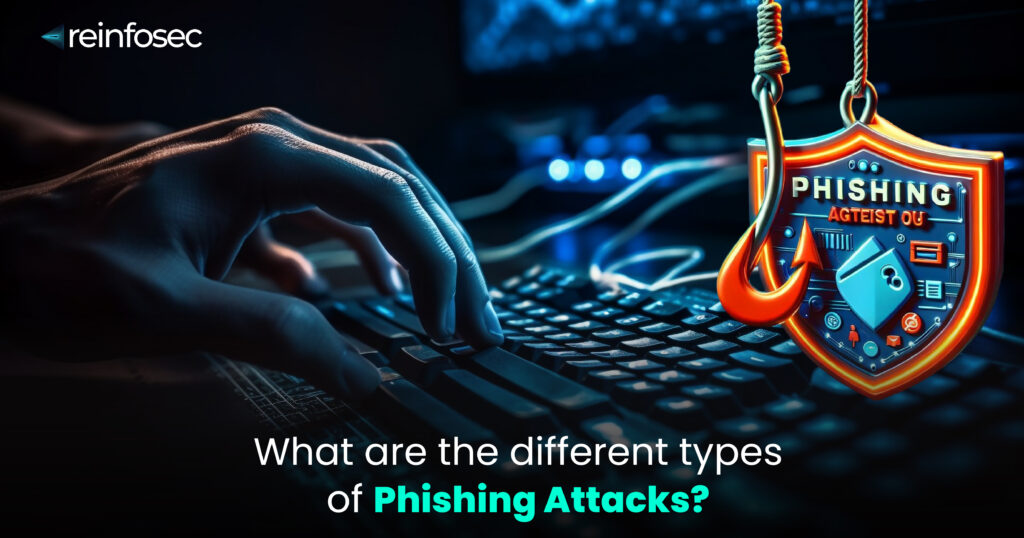When we think of hill stations, we automatically think of serene visuals covered by lush greenery that is untouched by the bustling city life. However, in those picturesque landscapes lies a silent threat in the form of leeches. These blood-sucking creatures hide in plain sight patiently waiting for the victim to cling to their skin.
Similarly, in the digital world, the opportunity to explore the vast opportunities comes with a catch. It is the ever-present threat of getting conned through a digital platform. The common term for it is Phishing and it is a highly used technique to deceive potential victims into revealing sensitive information. Just like a leech, a phishing attack will silently suck information from victims and use them for malicious activities. Let’s explore the different phishing techniques used by hackers.
What are the common tactics used in phishing attacks?
Phishing scams have various forms to it. The one thing in common is that all will be used to con unsuspecting victims. Some of the common tactics are:
- Email Phishing: Email phishing will look like a normal, legitimate email coming from genuine sources. However, they often come with a malicious link attached to them. When the link is clicked, it can impact the device with malware and steal information.
- Smishing (SMS Phishing): More or less similar to email phishing. This is where the victim will be attacked using fraudulent links sent through normal text messages.
- Vishing (Voice Phishing): Using voice to deceive potential victims, Vishing is a serious threat to banks and government bodies. The high usage of credit cards and social security numbers makes them an easy target.
- Phishing Websites: Cyber criminals will design fake websites and make their targets open them to steal information. The genuine appeal of a phishing threat is what makes them highly dangerous.
- Phishing Apps: Just like websites, the hackers will manipulate the victims to download the fake application created by them. Once the victim logs in, the hacker will steal all the sensitive information.
What are the most Advanced Phishing Techniques?
Spear Phishing
Spear phishing attacks narrowly by targeting specific individuals or groups within an organisation. Cybercriminals research their victims before making a move on. They will use highly personalised emails or messages that exploit the victim’s weak point.
Whaling
Whaling is a branch of spear phishing attacks that targets high-level personnel within a company. They can also target management-level people such as CEOs or CFOs.
Business Email Compromise (BEC)
BEC attacks target companies by hacking legitimate email accounts. Hackers get unauthorised access to accounts and send out emails to employees requesting financial transactions.
Watering Hole Attacks
Watering hole attacks don’t happen often. Cybercriminals compromise websites or online forums and inject malicious code into the site. When someone visits the compromised website, their devices become infected with malware.
Emerging Phishing Trends
As technology continues to evolve, so do phishing tactics. Some emerging trends include:
AI-Powered Phishing
Artificial intelligence is being used to create more powerful phishing threats. The capacity to analyse huge amounts of data makes it more lethal.
Deepfakes and Phishing
Deepfake technology is used to create highly realistic videos of individuals. Cybercriminals can use this to create convincing phishing attacks like fake video messages.
Social Engineering and Phishing
Socialising is something that keeps on evolving and is prone to getting baited more often than not. Using human psychology, cybercriminals can trick victims into giving out sensitive information or make them commit malicious actions.
Conclusion
We are living in a digital-first world. It doesn’t matter how big or small, every company is prone to cyberattacks. It is not just about finance. A company can lose a lot more when it is exposed to lethal cyber threats. Cybercrimes can affect a company’s ability to get up and run again. It can attack very severely within the blink of an eye. It is advisable to be prepared with the necessary security measures in place. Build a culture of security and regularly update the digital line of defence to always stay ahead of the threats.

